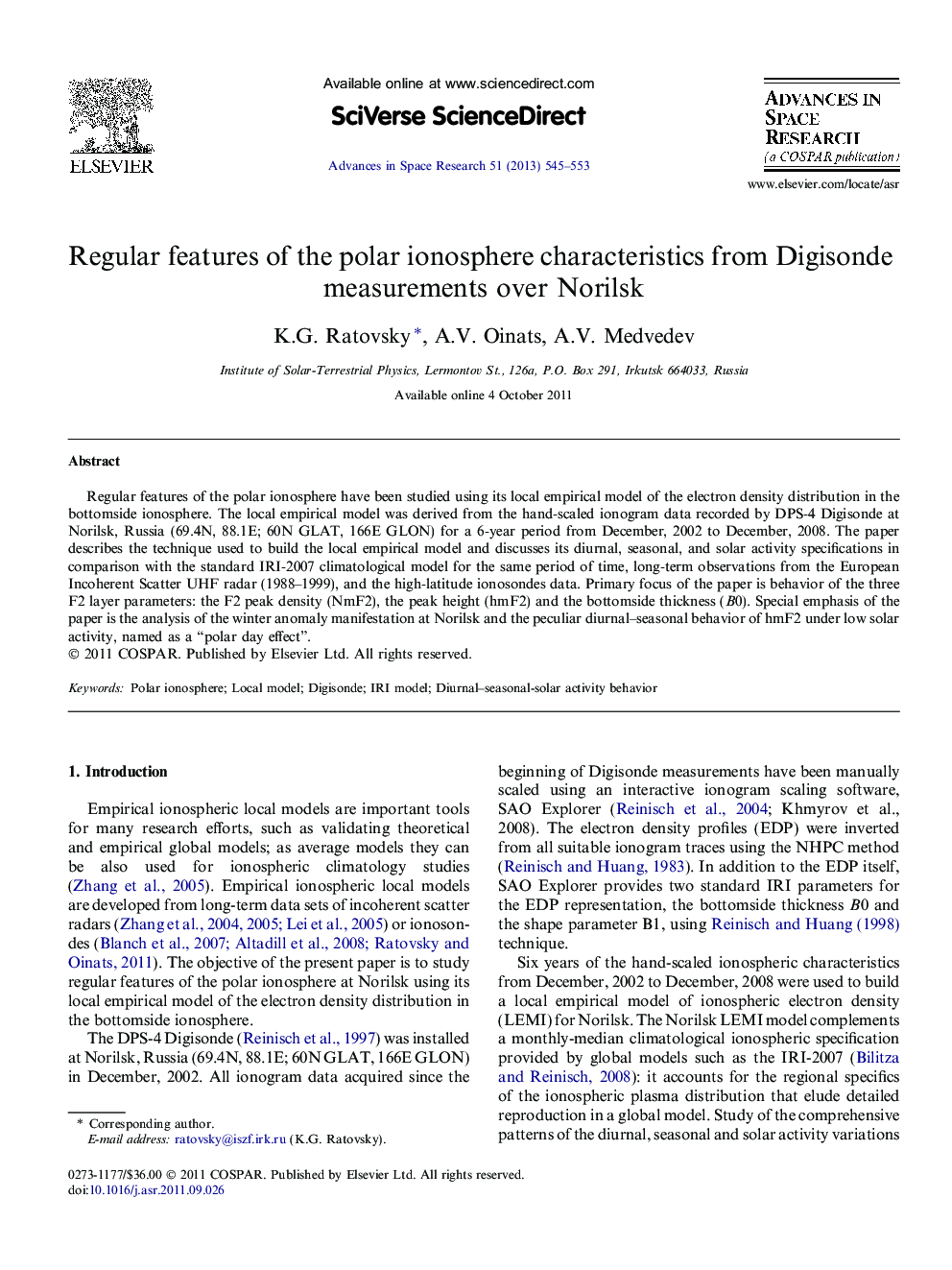| Article ID | Journal | Published Year | Pages | File Type |
|---|---|---|---|---|
| 1764983 | Advances in Space Research | 2013 | 9 Pages |
Abstract
Regular features of the polar ionosphere have been studied using its local empirical model of the electron density distribution in the bottomside ionosphere. The local empirical model was derived from the hand-scaled ionogram data recorded by DPS-4 Digisonde at Norilsk, Russia (69.4N, 88.1E; 60N GLAT, 166E GLON) for a 6-year period from December, 2002 to December, 2008. The paper describes the technique used to build the local empirical model and discusses its diurnal, seasonal, and solar activity specifications in comparison with the standard IRI-2007 climatological model for the same period of time, long-term observations from the European Incoherent Scatter UHF radar (1988-1999), and the high-latitude ionosondes data. Primary focus of the paper is behavior of the three F2 layer parameters: the F2 peak density (NmF2), the peak height (hmF2) and the bottomside thickness (B0). Special emphasis of the paper is the analysis of the winter anomaly manifestation at Norilsk and the peculiar diurnal-seasonal behavior of hmF2 under low solar activity, named as a “polar day effect”.
Related Topics
Physical Sciences and Engineering
Earth and Planetary Sciences
Space and Planetary Science
Authors
K.G. Ratovsky, A.V. Oinats, A.V. Medvedev,
